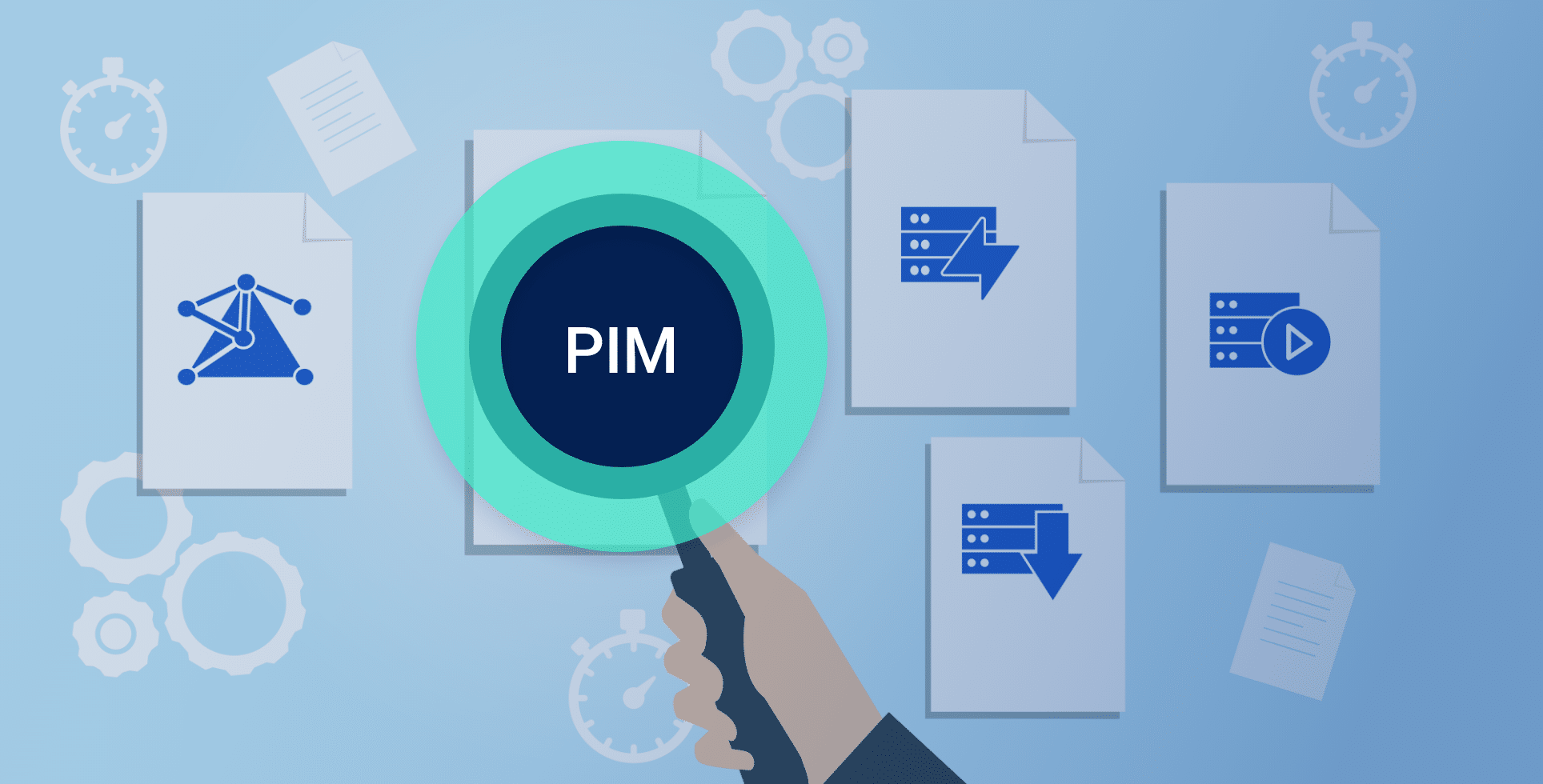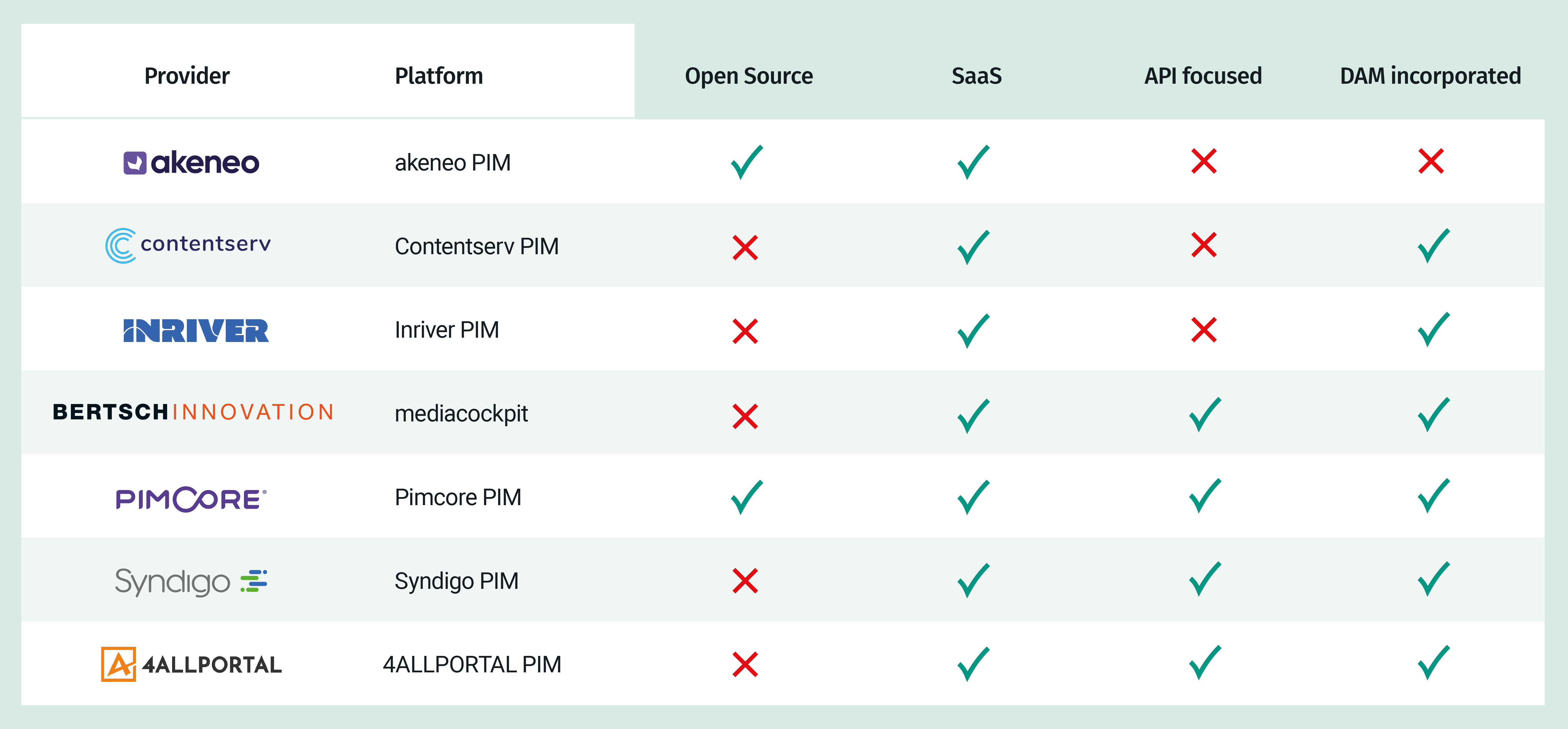Blog
PIM Vendors:
Comparing 7 Leading Systems

In today’s e-commerce landscape, customers expect comprehensive product information—detailed descriptions, high-quality images, and often even videos. But delivering that information seamlessly across online stores, social media platforms, and digital catalogs requires a powerful backend solution. That’s where Product Information Management (PIM) systems come into play.
What is a PIM system? Why is it critical for modern commerce? And how do different vendors compare?
This article breaks it all down.
1. What is a PIM System?
Product Information Management (PIM) software centralizes, enriches, and distributes product data across multiple channels. For many companies, managing descriptions, images, videos, and other assets efficiently and accurately is now part of daily operations.
If you’ve tried managing product content with spreadsheets or traditional ERP systems, you know how time-consuming and error-prone that can be. PIM platforms are purpose-built for this task, offering a scalable, streamlined way to manage product content across your organization.
2. Open Source vs. Proprietary Software
When choosing a PIM solution, companies typically face a key decision: Open-source or proprietary software?
Each option has its strengths—and tradeoffs. While open-source platforms offer flexibility and community support, proprietary systems may offer more stability, professional support, and out-of-the-box functionality. Cost should be only one of many factors. Long-term scalability, integration capabilities, and internal IT resources also matter.
3. SaaS vs. On-Premises Licensing
Another fundamental decision is deployment model: Software-as-a-Service (SaaS) or traditional on-premises licensing?
SaaS
With SaaS, the vendor hosts the solution in the cloud, handles updates, maintenance, and provides support. Billing is typically subscription-based (monthly or annually).
On-premise
On-premises software, on the other hand, is hosted internally. While this usually involves a one-time license fee, it also requires ongoing investment in infrastructure, IT staff, and maintenance.
Your company’s internal resources and strategic priorities will help determine the best fit.
4. Overview of 7 PIM Vendors
Once your requirements and deployment preferences are clear, the next step is evaluating vendors. The PIM market is diverse, and selecting the right provider isn’t easy.
To help, we’ve compiled a snapshot of seven prominent platforms:

1. akeneo
akeneo is a community-driven, open-source PIM solution designed for omnichannel product data management. A limited Community Edition is available for free.
Key Features:
- Multichannel support with localization
- Active community and extensive plug-ins
2. Contentserv
Contentserv delivers a cloud-based, SaaS PIM platform for centralized product data management. A free trial is available.
Key Features:
- Centralized data hub
- Seamless multi-channel publishing
3. inriver
inriver is a cloud-native SaaS platform offering scalable, flexible PIM capabilities.
Key Features:
- Digital Shelf Analytics to improve online conversions
- Wide system integration ecosystem
4. mediacockpit
mediacockpit, from Bertsch Innovation, combines PIM and Digital Asset Management (DAM) in a single platform.
Key Features:
- Integrated PIM and DAM for unified product content workflows
- Centralized media and data management
5. Pimcore
Pimcore is an open-source Digital Experience Platform offering PIM, MDM, and DAM functionalities. Available as SaaS or on-prem.
Key Features:
- Free Community Edition
- API-first architecture for custom integrations
6. Syndigo
Syndigo provides a cloud-based SaaS suite with real-time product data distribution. Its MDM, PIM, and analytics features are modular and scalable.
Key Features:
- Real-time updates across channels
- Flexible cloud access from anywhere
7. 4ALLPORTAL
4ALLPORTAL is a modular software solution integrating PIM and DAM—ideal for content-heavy enterprises. Available as SaaS or on-prem.
Key Features:
- Modular design for tailored solutions
- Unified digital asset and product data management
5. How to Choose the Right PIM Vendor
Understanding your options is just the beginning. The next step is evaluating which solution aligns with your company’s technical requirements and strategic goals.
Keep in mind: a PIM implementation is not just an IT project. It affects marketing, sales, IT, and executive leadership. Stakeholder involvement is essential.
Evaluate vendors based on integration capabilities, usability, scalability, support, and overall ROI. A well-informed decision will ensure long-term value.
6. Conclusion
The best PIM system depends on your business’s unique needs:
- Akeneo and Pimcore stand out for flexibility and community-driven development.
- Contentserv and 4ALLPORTAL offer modular, scalable platforms.
- Syndigo and inriver focus on analytics and performance-driven content distribution.
- mediacockpit delivers robust integration of product and media assets for holistic content management.
Our recommendation: Define your specific requirements, and explore demos to find the right fit.
Interested in learning more about mediacockpit? We’re here to help.
Highlighted Whitepaper
ePaper: Strategic Product Content Management with PIM & DAM
Hoe je je product content management duurzaam kunt optimaliseren: in onze whitepaper laten we je zien hoe je je processen kunt optimaliseren met een PIM & DAM – inclusief waardevolle inzichten en beproefde strategieën.
Samen meer bereiken
Wij geloven in de waarde van samenwerking en uitwisseling. Dit geldt zowel de projecten met onze klanten, waaruit we veel waardevolle inzichten genereren voor onze productontwikkeling, als voor ons groeiende partnernetwerk, waarmee we onze klanten ondersteunen bij hun digitalisering.



